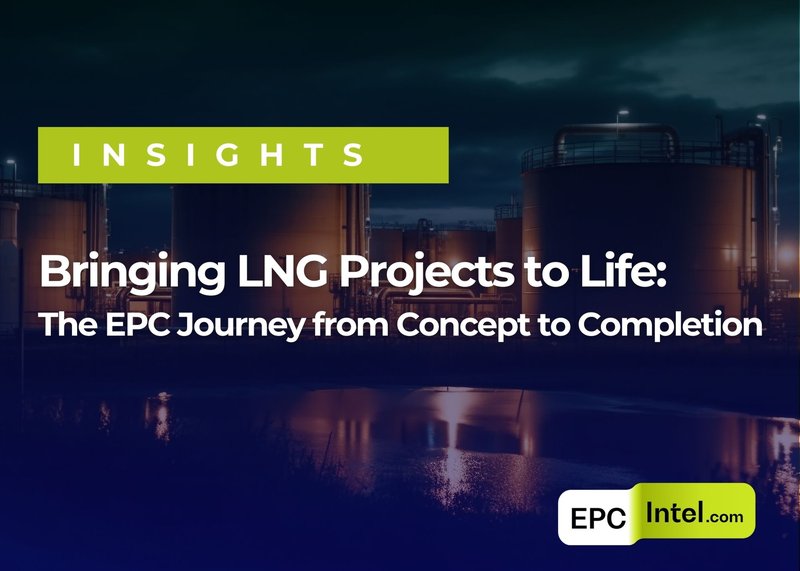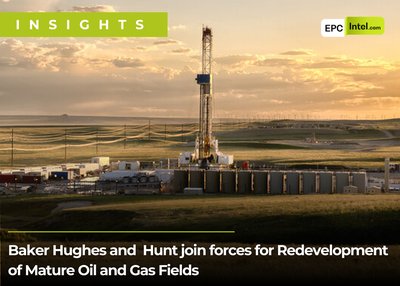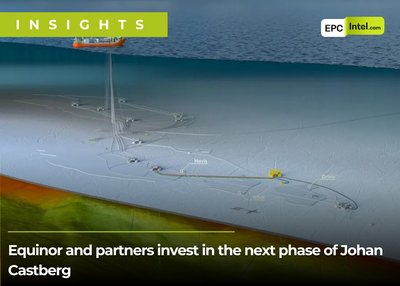Ever wondered how massive LNG (Liquefied Natural Gas) projects transition from a mere idea to a fully operational facility? The magic lies in the EPC (Engineering, Procurement, and Construction) process. This intricate journey turns concepts into reality, orchestrating every element from initial design to final delivery. Let’s explore how the EPC contract process brings together the upstream, midstream, and downstream components of an LNG project, along with a broad timeline for each stage.
The EPC Contract: An Overview
An EPC contract is a turnkey agreement where a single contractor is responsible for all activities—from engineering and design to procurement of materials and construction of the facility. This approach ensures a seamless process, cost efficiency, and a single point of responsibility.
1. Conceptualization and Feasibility (6-12 Months)
Before the EPC contract kicks in, the project goes through a conceptualization phase.
-
Feasibility Studies: Assessing the technical and economic viability of the project.
-
Site Selection: Choosing optimal locations for upstream extraction, midstream processing, and downstream facilities.
-
Environmental Impact Assessments: Evaluating potential environmental risks and mitigation strategies.
Timeline: Approximately 6 to 12 months, depending on project complexity and regulatory requirements.
2. Front-End Engineering Design (FEED) (12-18 Months)
The FEED phase bridges the gap between conceptualization and detailed engineering.
-
Basic Engineering: Developing preliminary designs for major systems and components.
-
Cost Estimation: Providing more accurate project budgets.
-
Tender Preparation: Preparing documents to invite EPC contractors to bid.
-
Timeline: This phase typically lasts 12 to 18 months.
3. EPC Contract Award and Mobilization (3-6 Months)
After the FEED, the project moves into the EPC phase.
-
Contract Award: Selecting an EPC contractor based on bids.
-
Negotiations: Finalizing terms, scope, and responsibilities.
-
Mobilization: The contractor assembles the project team and resources.
-
Timeline: Contract negotiations and mobilization can take around 3 to 6 months.
4. Detailed Engineering and Design (12-24 Months)
In this stage, every aspect of the project is meticulously planned.
-
Upstream Facilities: Designing drilling platforms, wellheads, and initial processing units.
-
Midstream Facilities: Engineering the gas processing plant, liquefaction units, storage tanks, and loading terminals.
-
Downstream Facilities: Planning regasification terminals and pipeline networks.
-
Regulatory Approvals: Obtaining necessary permits and compliance certifications.
-
Timeline: Detailed engineering can span from 12 to 24 months.
5. Procurement (Concurrent with Engineering and Construction)
Procurement overlaps with engineering and construction phases.
-
Sourcing Materials: Ordering equipment like compressors, turbines, and cryogenic tanks.
-
Vendor Selection: Choosing reliable suppliers and negotiating contracts.
-
Logistics Planning: Coordinating the delivery of materials to the construction site.
-
Timeline: Procurement activities are ongoing but intensify during the construction phase.
6. Construction (24-48 Months)
This is where the project starts taking physical shape.
-
Upstream Construction: Building drilling rigs, wellheads, and initial processing facilities.
-
Midstream Construction: Erecting liquefaction plants, storage tanks, and loading facilities.
-
Downstream Construction: Setting up regasification terminals and laying pipelines.
-
Health and Safety: Implementing strict safety protocols to protect workers and the environment.
-
Timeline: Construction can last anywhere from 2 to 4 years, depending on the project’s scale.
7. Commissioning and Start-Up (6-12 Months)
Before the facility becomes fully operational, it undergoes rigorous testing.
-
System Checks: Testing individual components and systems.
-
Performance Testing: Ensuring the facility operates at the intended capacity.
-
Staff Training: Preparing the operational team to take over.
-
Timeline: This phase usually takes 6 to 12 months.
8. Operations and Maintenance
After commissioning, the facility enters the operational phase.
-
Ongoing Operations: The facility begins regular LNG production and distribution.
-
Maintenance Programs: Scheduled upkeep to ensure efficiency and longevity.
-
Continuous Improvement: Implementing upgrades and optimizations over time.
-
Timeline: This phase continues for the lifespan of the facility, often 20-30 years.
The Big Picture Timeline
-
Conceptualization and Feasibility: 6-12 months
-
FEED: 12-18 months
-
EPC Contract and Mobilization: 3-6 months
-
Engineering and Design: 12-24 months
-
Construction: 24-48 months
-
Commissioning and Start-Up: 6-12 months
-
Total Time from Concept to Operation: Approximately 5 to 8 years
Conclusion
Transforming the elements of an LNG project from concept to reality is a monumental task that spans several years and involves meticulous planning and execution. The EPC contract process is the backbone that supports this transformation, ensuring each component—from upstream extraction to downstream distribution—is seamlessly integrated.
Interested in delving deeper into the world of EPC contracts and LNG projects? Visit EPCIntel.com for more insights and comprehensive contract information.




